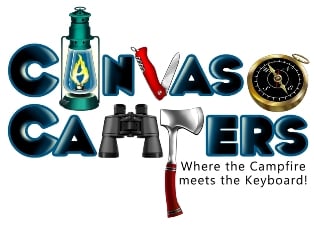Something else too here, the smaller and lighter the trailer , more likely it will follow every rut that's in your way trying to back up ! I have a 14 ft. boat on a trailer and what a pain but I also have the pop up and a 17 ft. boat , not a problem at all. Some times the trailer axels aren't set right , seen that before too. best thing to do is find a parking lot and practice or practice in your yard and driveway. Believe me , the heavier the load the easier and also better it will track backing up. like everybody else stated , small movements on the wheel goes along ways on the trailer .
When Backing up - LONGER is better. Longer the wheel bases of the TV and more important is longer the Distance from the hitch to the axial of the trailer. Weight is only an issue/factor if there is ruts or on a slant/hilly area.
Reason - Smaller/shorter trailers are harder to control cause changes in the TV steering are more pronounced. Longer trailer less the turning of the TV will affect the trailer (actual take longer distance to affect the change in direction of the trailer). Thus longer the wheel base of the TV and Trailer = much finer control.
I had a small (cheap) trailer that was maybe 8 feet long (tongue to rear) with a 4x4 box - the hitch to axial was maybe 5 or 5.5 feet..... It was easier to push it and park it than to back it up (which was almost impossible as the slight change cause it to jack knife with in a few second/feet. To back it up 12 feet took 20+ times going forward/back.
Yet to park a 16 foot trailer (about 12 feet from hitch to axial) was a dream to do and so easy to backup (with voice direction due to it being so big). Took 2 whacks to back it up (once to get it lined up and the second one to get it close to the building).
Great ideas from everyone, the one thing i have always done is look at the site before backing in and look at my drivers side for focal points. as i am backing up i use the wife on the passenger side(out side the tv) to guide on that side with the mirror and the focal point as a guide on the drivers side. slow and steady will get the job done.
Well --- backing up is usually no problem at all for me. The DW usually stands outside-ALWAYS where I can see her in my (near side) mirror. She absolutely NEVER EVER yells anything at me. I have learned that if she says anything at all, I know to stop, then listen to her. Sometimes I will exit the Jeep and go look for myself as to where I am. She is remarkeable at hand signals.
I think the main problem most couples have when trying to back up as a team is ------ lack of patience. For real, when backing up, SLOW DOWN, OPEN YOUR MIND, treat each other with respect, LISTEN, WATCH, and just be PATIENT. I think this will help alot.
I have learned that my DW will only instruct me, if there is an accident waiting to happen. In which case, I need to pay attention to her.
Backing is best learned by patient practice. It need not be stressful. However, it helps tremendously to have a good sense of 3D imagination in your mind. You can better see the physical relationship with the front wheels, the hitch connection, the axle on the trailer and the relationship that they all have working together.
If anyone is ever directing a driver from outside, it's always best for the director to indicate the direction that the rear of the trailer needs to move by motioning clear hand signals. Never use "LEFT" or "RIGHT". Not only is it inherently more clear to the driver, but it's quite and by far the most considerate means to use in a campground.
769
47
1 Guest(s)

